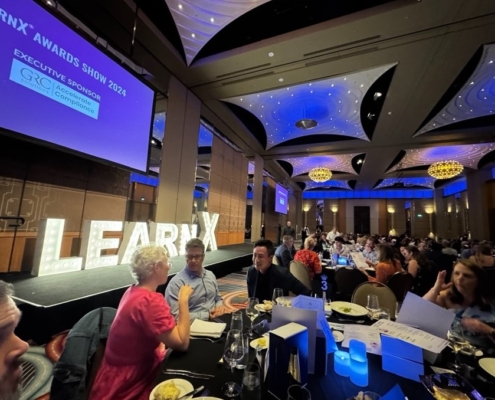4 Steps to Improve Your Compliance Training Scenarios
Learning is more effective when learners can relate to the content by reflecting upon their real-world experience. Presenting scenarios in training are often used to assist in this reflection. This article shares four simple steps for writing relevant and effective scenarios and several tips to help you incorporate relevant scenarios into your compliance training sessions.
Step 1: Prepare
Not all learners have the same day-to-day work experience, so any training that an employee receives should be tailored to his or her job role. Begin by identifying your learners and their unique challenges and tasks. For instance, in the health insurance sector, there are customer-facing or call center staff who deal with complaints, sales staff working away from the office and potentially interacting with competitors, and claims processing staff who deal with clients’ private data.
Another consideration is the location of learners, which is particularly important if your organization is global. For example, a scenario for an employee in the United States could be different than a scenario for an employee in the same role in Japan or the Middle East, as different countries and regions have their own customs.
Tip: As part of a training needs analysis, develop a simple risk profile of your learners, their job role, their location, their unique challenges and their required training.
Step 2: Research the Content
The scenario must be relevant to learners’ day-to-day job role to arouse curiosity and give them a sense of familiarity. Before writing a scenario:
Research legal proceedings or news items for interesting and relevant industry cases or stories.
Research compliance failures within your industry or at your organization or a competitor.
Discuss potential scenarios with team members and subject matter experts to flesh out examples.
Scenarios should be succinct enough to allow for quick reading, interesting and relevant to the specific concept it’s illustrating.
Tip: Look out for interesting industry-specific anecdotes or incidents, and work backward to predict how the compliance failure may have occurred.
Step 3: Write the Scenario
A successful scenario will prompt learners to reflect upon their prior experiences. When writing a scenario, consider the characters involved, the organization where they work and the situation they find themselves in.
The Characters
To ensure a scenario is as true to life as possible, make sure that the characters who appear in the scenario reflect the diversity found in the organization. In addition, consider that a character is not only a person but may also be an organization.
The Situation
Begin by introducing a fictitious character. Outline the character’s job role and (usually fictitious) organization. Build upon this foundation by succinctly outlining the situation, the character and related parties find themselves in, such as a privacy breach that occurs after a staff member leaves sensitive documentation unsecured on his or her desk.
Tip: If the scenario evolves with additional information, be careful not to provide too much information up front. The aim here is to help learners reflect on their role and make them curious, so they want to see what happens next.
An Evolving Story
Expand upon a scenario by adding additional information as the training progresses. This type of narrative helps create a flow and maintain learners’ curiosity.
Tip: You are a storyteller. Take the learners on the journey of how a potential or actual compliance failure occurred.
Step 4: Write Questions and Answers With Feedback
Putting the scenario at the beginning of a training module helps to arouse curiosity and ease learners into the content. Following up with other learning content helps them place that content in the context of the preceding scenario.
Ending with a quiz or other knowledge check related to the scenario helps reinforce the concepts covered; be sure to have a link to the scenario so that the learners can refer back to it. Ask a short question related to the actions of one of the characters — for instance, “Could ABC be a target for money launderers or terrorist financers?”. Expand on the answer options; in this case, they do not have to be a simple “yes” or “no” but can include a reason why. Be sure to provide instant feedback; for example, when a user clicks on an answer, they receive an explanation of why their answer was correct or incorrect.
Tip: When writing a question, don’t make its answer too obvious. If learners think about the answer and even answer incorrectly at first, they are more likely to remember it in future.
Scenarios are a simple yet effective way to motivate learners, arouse their curiosity and help them understand how the training relates to them. By providing real-world, relevant stories, you can help ensure that learners receive training positively ultimately change their behavior.
Originally posted on:












